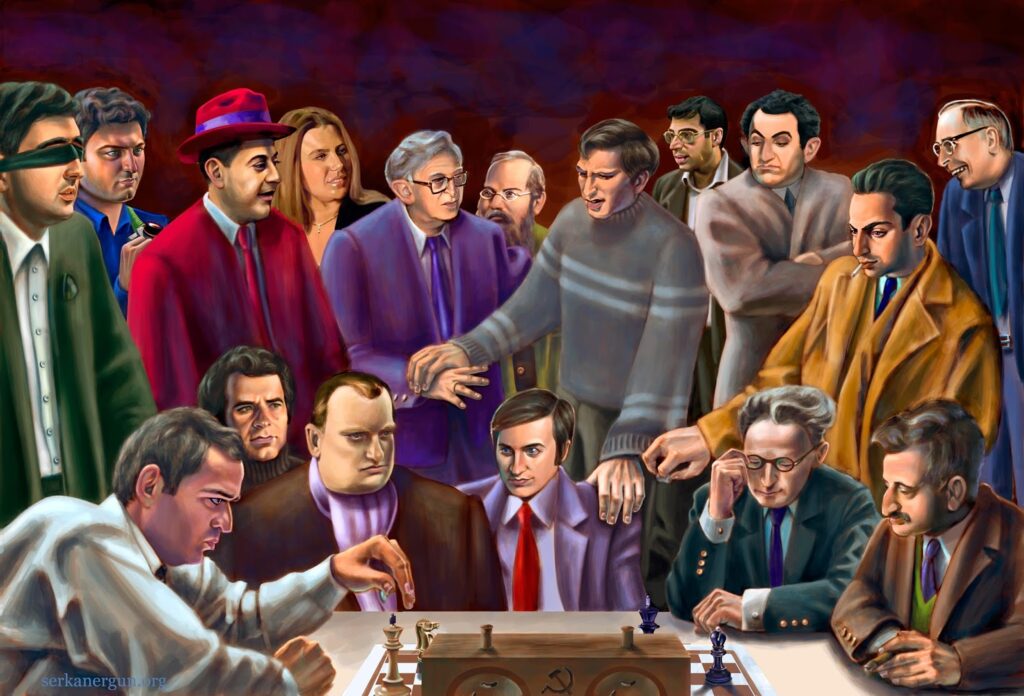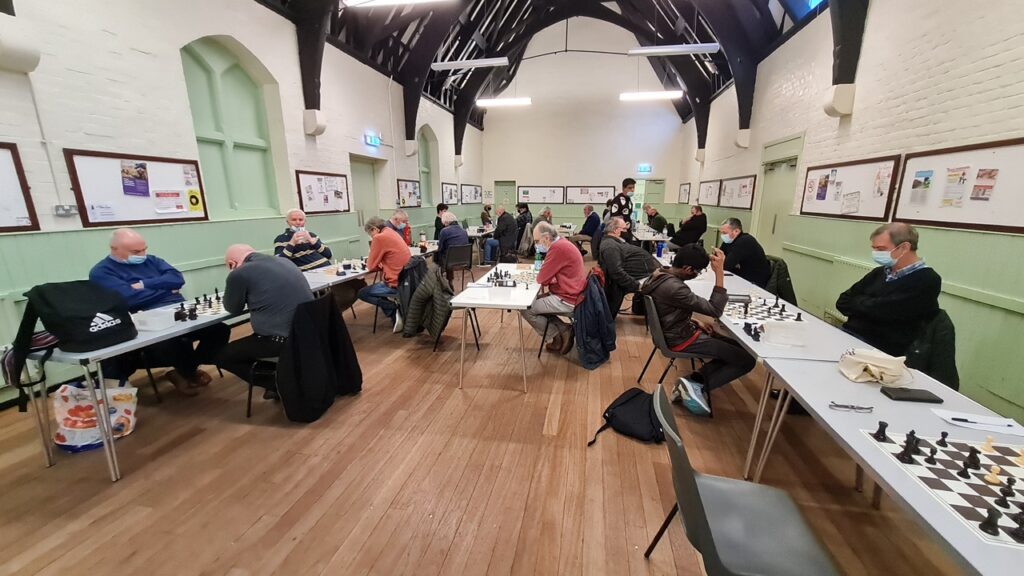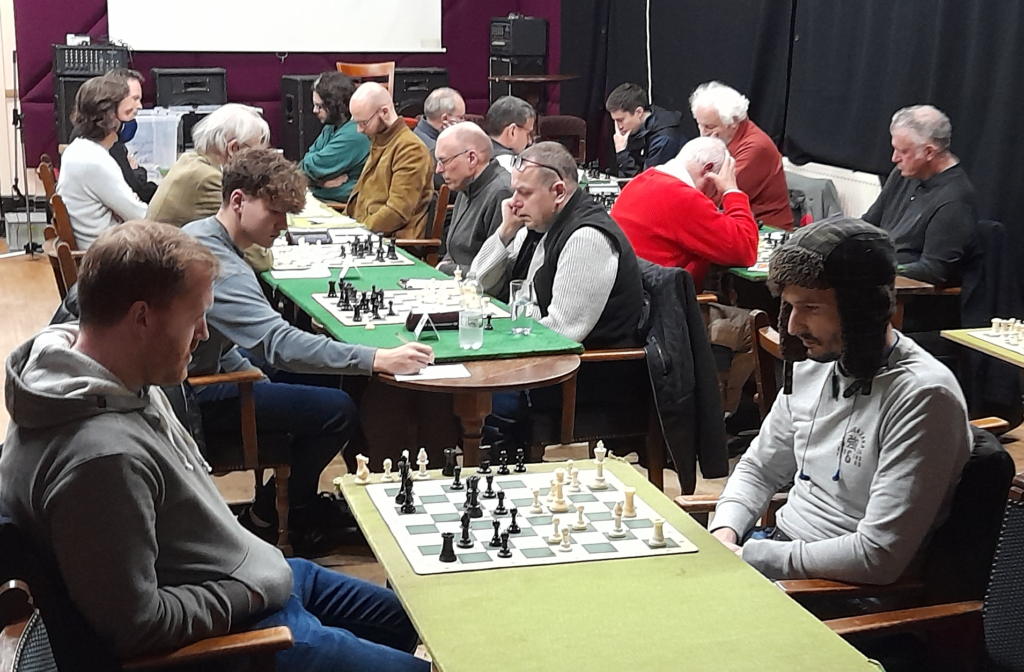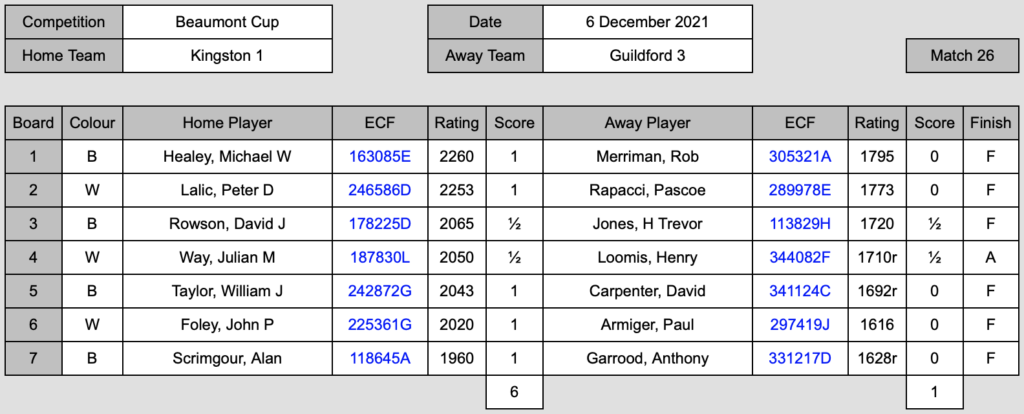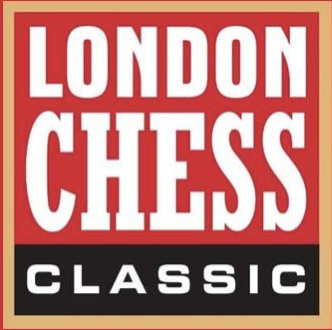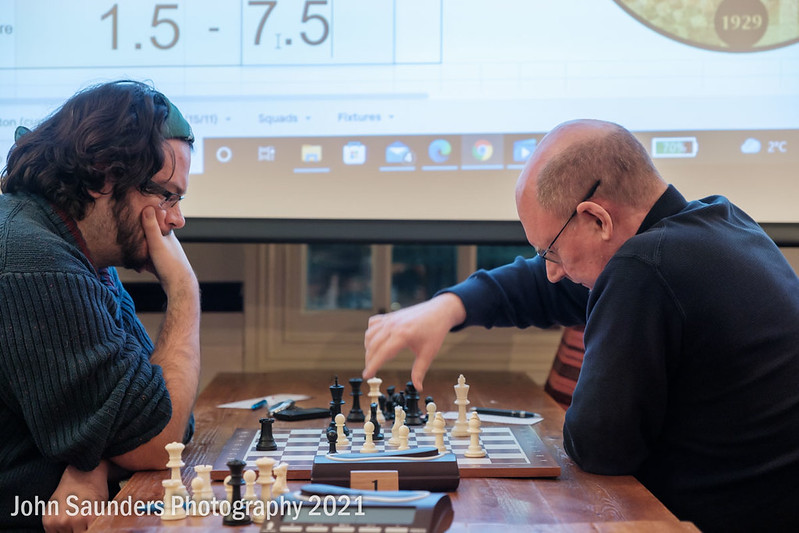When you haven’t played an over-the-board tournament in 15 years, it takes courage to return in a hot blitz event full of underrated juniors in the middle of a pandemic
Gregor Smith
I am not going to lie; I may have been under the influence of alcohol when I decided to enter this tournament. However, it was the Dutch courage I needed to return to the over-the-board tournament scene after a 15-year hiatus.
I played a lot of tournament chess as a junior, but then barely moved a piece until becoming one of the 12 million worldwide who joined chess.com during the pandemic. So here I was at the “Richmond Christmas Blitz” (prize fund £3,000!) making my comeback, off a rating of 1353 given to me on the basis of a few online-rated games.
Some things were familiar – the cold gym hall filled with chess tables, the hustle and bustle when the draw sheet was put up for each round, and the usual reminders from the arbiters before each round that touch move applied.
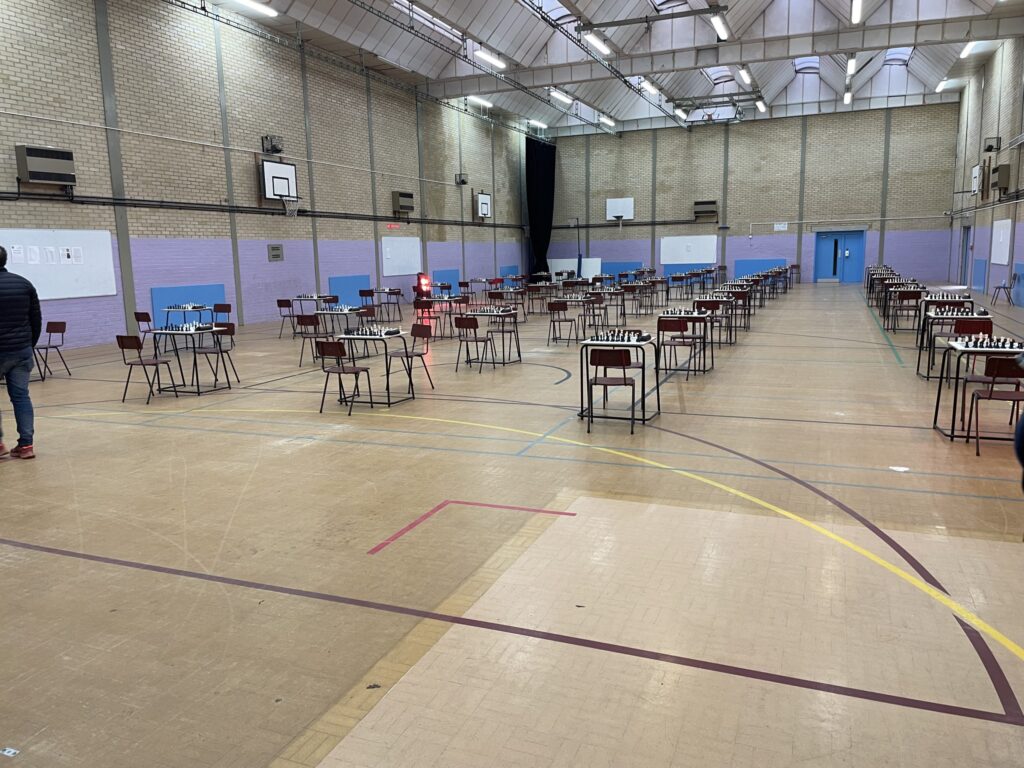
Other things were less familiar: a 4 min + 2 sec time control (digital clocks and increments didn’t exist last time out, and this was a bit quick for my comfort zone); random metal detector searches to see if anyone was playing with their phone in their pocket; and of course playing in facemasks, only to be removed if you wanted to offer a draw.
So how did it go? Here is a whistlestop tour of my 11 rounds. Unfortunately, unlike the phenomenal Peter Lalic, I cannot remember the exact moves in my 11 games. In fact, I can’t remember five consecutive moves in any game. It was all a bit of a blur.
Round 1: Destroyed by a titled player. Blundered a pawn in the opening as Black and didn’t get a sniff. (0/1)
Round 2: A solid victory over a (very) young Richmond Junior. Such a splendid kid – before the game he asked me if I knew the “Dragon” opening (I don’t) and then, after the game, he complimented my handwriting on the results slip (my handwriting is barely legible). His time will come. (1/2)
Round 3: A feeble attempt against another much higher-rated opponent. Rolled out my “Tiger’s Modern” opening (something I found on YouTube), but got too cramped and was slowly crushed. (1/3)
Round 4: Another loss, but a braver attempt. It was probably a drawn endgame, but I managed to blunder a pawn in time trouble and my opponent finished well. (1/4)
Round 5: Another (very) young Richmond whizz. My first big blunder of the day and my opponent had me on the ropes, but managed to flag himself on the brink of victory. I honestly felt terrible for him as he slumped back to his parents. He more than deserved to beat me. That kid will go far. (2/5)
Round 6: A nice win over a higher-rated opponent. This time I got the better of another drawn-looking endgame after winning a pawn and managing to promote my passed pawn on the flank. Swings and roundabouts. (3/6)
Rounds 7 & 8: Two crushing defeats as black for my YouTube defence against stronger opponents who didn’t put a foot wrong. I guess I don’t know the opening as well as I thought I did and continually end up with cramped positions and no plan. I decided at this point that I am never, ever playing it again. (3/8)
Round 9: A rare occurrence where my opponent played 1…e5 in response to my 1. e4 and then proceeded to accept all three pawns in my favourite Danish Gambit. These are such fun games to play; I don’t even mind losing from this position. It’s always a bumpy ride. I managed to set up a scything attack and won quickly. (4/9)
Round 10: This is where the magic happened. A first-ever victory against a 2000+ opponent, Luis Ortiz from Spain. I played the Smith-Morra Gambit (another YouTube special) and reached a comfortable position before finding a nice tactic to win a piece. I then spent the rest of the game preparing myself for the inevitable defeat. We all know that Imposter Syndrome feeling – there’s no way I can actually beat this guy, right! But I did, keeping patient and managing to fork his rooks to end up two rooks to one in the endgame before finishing it off. (5/10)
Round 11: By this stage, everyone was looking a bit weary, but thankfully my adrenaline was rushing high. So high, I even retrieved my earlier retired Tiger’s Modern from the scrapheap after my higher-rated opponent opened 1. f3!? and I didn’t know what else to do. 1… g6, 2. g3 … chess.com comes up with zero games in its database that have followed these moves, and no wonder. What followed was an extremely closed and complicated game, and my opponent strangely went into the tank for three consecutive moves and flagged himself while I still had two minutes left on the clock. Definitely weary. (6/11)
My goal for the day was to beat someone better than me, and to manage to beat three players rated higher than me made the occasion all the sweeter. But the main thing was that it was great to be back.
Thanks to Kingston club-mate David Maycock for his constant support and words of wisdom throughout the day. He even took the time to talk me through the Philidor Defence in a five-minute break between rounds after I’d played badly against it in round 4. The great thing was I always knew where to find him between rounds – camped beside the Halogen heater!
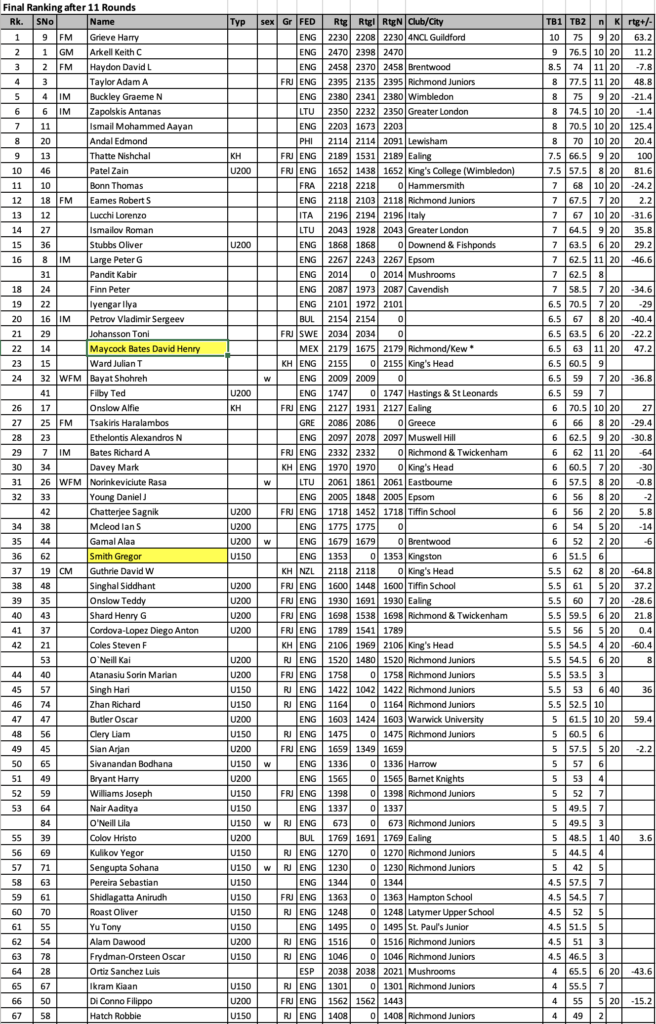
I learned several lessons from the tournament. Eleven games is a lot of chess: don’t let early disappointments get you down. Always have a plan: too often I didn’t have one, and you don’t have time to think of many options. Even strong players make mistakes in blitz: this was a David Maycock special – always believe you have a chance of winning. My rating performance was 1605 – a considerable improvement on my starting level of 1353.
And, finally, thanks to Paul McKeown and the team at Richmond Junior Chess Club, who ran a seamless and safe tournament in memory of Rik Thomas, one of their coaches, who sadly passed away during the pandemic, and also marking the deaths of two Richmond Juniors’ parents, Suman Chatterjee and Jatinder Sian. Thanks, too, to Orleans Park School in Twickenham, where the event took place. It was particularly fitting to see so many talented juniors so enthusiastic about the game.



